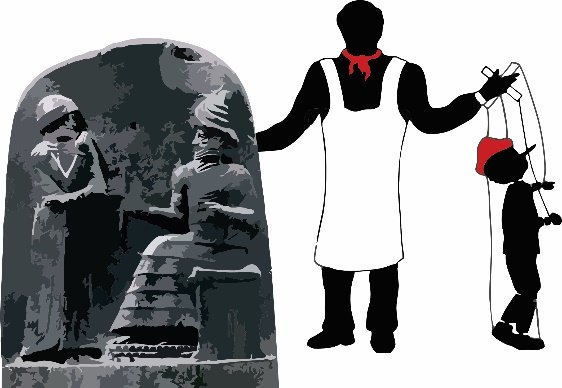
Defending The Republic, Part 1: Scenarios
Over the last year, I’ve been thinking, researching, and writing (Corporatism Part 1, Part 2; Thoughts on Ukraine, Part 7: The Joint Corporatist Scenario, among others) a lot about corporatism. I’ve been searching for a reason why corporations are doing what they are doing with social justice agendas. Why are they embracing the Diversity, Inclusion, and Equity (DIE), Corporate Social Responsibility (CSR) and Environmental, Social, and Governance (ESG) agendas? Then I came across a New York Post article on Corporate Equality Index (CEI) and how it can shape/compel policies.
That triggered a new way of looking at the issue and I fell back on some concepts from my military days and Intelligence Preparation of the Battlefield (IPB). One tenet is to develop the enemy’s most likely and most dangerous courses of action. To that, I added a status quo course of action. As I contemplated this and thought back to my recently written Strategic Balance piece, I mentally put it all together. Corporatism was just one element of an overall IPB focused on defending the Republic. I say defending the Republic vice the state/country because we may maintain a state/country and still lose the Republic: see Rome.
This post introduces the Defending the Republic series and summarizes the issues and the analysis. Since I covered most of the environment and players/activities in other posts, this series will focus on the threat scenarios and how they affect the strategic balance and potential ways the US can address them. While China and Russia are clearly external threats, they do influence internal US actions and may fund activities that threaten the Republic.
The high level IPB is shown in the figure above. It covers the environment, key players/activities, and potential threat courses of action. Most of the players/activities and the environment are well-covered in previous blog posts and I have provided references to them.
Players and Activities
Russia. I’ve discussed Russia in The Ukraine Series: Part 12, 11,10,9,8,7,6,5,4,3,2,1, Peace Treaty Thoughts. The most dangerous outcome for Russia is that it either becomes a failed state with nuclear weapons or a vassal state to China.
China. I discussed China in three blogs as well as referenced it in some of the Ukraine posts and other strategy posts. (China: The Patient Dragon, China: Benign Player of Global Threat, The Fentanyl Attack). The most dangerous outcome is for China to directly attack the US or step up its current indirect attacks. Make no mistake, we are already at war with China. The question is, how much more will it escalate?
Education/Teachers Unions. I have covered education extensive in The Recreating History Series: Part 10, 9, 8, 7, 6, 5, 4, 3, 2,1 Education Reform posts: Part 1, 2,3), Critical Thinking posts: Critical Thinking and International Relations Theory, Critical Thinking and Policy, Critical Thinking: Correlation, Causation, and Control, Critical Thinking: Credence and Veracity, Critical Thinking and Policy Development and Analysis, Critical Thinking: Logic and Rationality, Critical Thinking: Decisions and System 1 System 2 Thinking, Critical Thinking: Bounded Rationality and Time, Critical Thinking: An Introduction to Key Components and Dimensions, Teachers’ Unions and Critical Theories, The “Critical” in Critical Theories, Education Strategy Gone Amok). Education is critical for the Republic’s survival. Unfortunately, as the referenced posts show, the American Education Institution is failing. And there are indicators that China is funding this failure.
Border. The border is dangerous and porous, as shown in many of the referenced posts. There are at least three dangerous problems associated with the border: cost, culture, crime, and drugs. The Strategic Balance piece introduces these issues. Subsequent posts in this series will provide greater analysis of them.
Scenarios
- Regulatory capture. This scenario has three variations. The first, individual company regulatory capture, is well studied and has been around since at least the Wilsonian reforms. See Regulatory Capture and Other Bureaucratic Problems. The next stage is when an industry works to shape, influence, and even direct policy and execution. This collusion ups the ante and magnifies the effects of regulatory capture. The greater the level of capture, the greater the benefits for industry, the more power the industry has over governance, and the more potential problems and disadvantages for citizens. The third stage is when multiple industries work together to control legislation and regulation. If more industries collude, the situation could escalate to policy domination.
 Policy Domination. Policy setting and execution is at the heart of governance. With policy domination, voting is almost a moot exercise. Corporations and other entities control both the politicians and the bureaucracy. In fact, they may compromise voting and the elections may be political shows and shams. The public thinks they are in control when they really are not. The Constitution is still nominally in force, but in reality, it is a fig leaf observed only when it is convenient. In some respects, this reflects the “communism” of China and the former Soviet Union. Puppet Masters control the government as shown in the image. They can do directly like the puppet to the right or indirectly like the image of Hammurabi receiving the code of laws from Marduk to the left. Policy control taken to an extreme can lead to the takeover scenario.
Policy Domination. Policy setting and execution is at the heart of governance. With policy domination, voting is almost a moot exercise. Corporations and other entities control both the politicians and the bureaucracy. In fact, they may compromise voting and the elections may be political shows and shams. The public thinks they are in control when they really are not. The Constitution is still nominally in force, but in reality, it is a fig leaf observed only when it is convenient. In some respects, this reflects the “communism” of China and the former Soviet Union. Puppet Masters control the government as shown in the image. They can do directly like the puppet to the right or indirectly like the image of Hammurabi receiving the code of laws from Marduk to the left. Policy control taken to an extreme can lead to the takeover scenario.- Takeover. In this scenario, forces completely take over the government and suspend, then declare the Constitution null and void. While this sounds extreme, there are elements in the social justice movement, to include some judges, that have stated the Constitution is a terribly flawed and racist document that must be eliminated. While many threat elements may be content to act as the puppet master, there could come a time or situation when the fig leaf is no longer needed. This situation could be developed by creating instability and social unrest, which the puppet masters then use these conditions to declare martial law and suspend all or parts of the Constitution, like actions in the American Civil War (government suspended Habeas Corpus) and WWI (government suppressed free speech and jailed people who spoke out against the war).
Follow on blogs in this series will evaluate and access the three scenarios and potential action to eliminate or reduce the likelihood of their occurrence. Make no mistake, we are already amid at least the lower key aspects of regulatory capture. For example, regulatory capture of Congress and the FDA is doing daily harm to our citizens.





